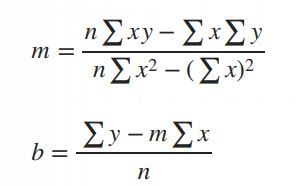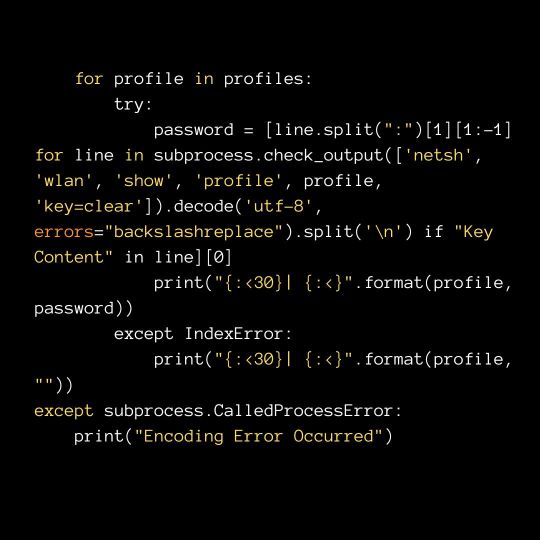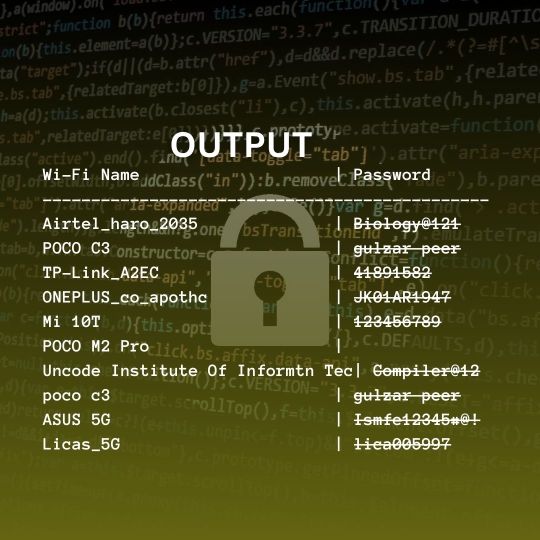#machine learning in Python
Explore tagged Tumblr posts
Text
Machine learning with Python has grown rapidly, thanks to its clear syntax and powerful tools. If you're planning to build ML models, choosing the right libraries can save you a lot of time and help you get better results. Here are some of the top Python libraries for ML that are commonly used by developers and data scientists:
#top Python libraries for ML#machine learning in python#Python development#Best python libraries for ml
0 notes
Text

They call it "Cost optimization to navigate crises"
676 notes
·
View notes
Text
I desprately need someone to talk to about this
I've been working on a system to allow a genetic algorithm to create DNA code which can create self-organising organisms. Someone I know has created a very effective genetic algorithm which blows NEAT out of the water in my opinion. So, this algorithm is very good at using food values to determine which organisms to breed, how to breed them, and the multitude of different biologically inspired mutation mechanisms which allow for things like meta genes and meta-meta genes, and a whole other slew of things. I am building a translation system, basically a compiler on top of it, and designing an instruction set and genetic repair mechanisms to allow it to convert ANY hexadecimal string into a valid, operable program. I'm doing this by having an organism with, so far, 5 planned chromosomes. The first and second chromosome are the INITIAL STATE of a neural network. The number and configuration of input nodes, the number and configuration of output nodes, whatever code it needs for a fitness function, and the configuration and weights of the layers. This neural network is not used at all in the fitness evaluation of the organism, but purely something the organism itself can manage, train, and utilize how it sees fit.
The third is the complete code of the program which runs the organism. Its basically a list of ASM opcodes and arguments written in hexadecimal. It is comprised of codons which represent the different hexadecimal characters, as well as a start and stop codon. This program will be compiled into executable machine code using LLVM IR and a custom instruction set I've designed for the organisms to give them a turing complete programming language and some helper functions to make certain processes simpler to evolve. This includes messages between the organisms, reproduction methods, and all the methods necessary for the organisms to develop sight, hearing, and recieve various other inputs, and also to output audio, video, and various outputs like mouse, keyboard, or a gamepad output. The fourth is a blank slate, which the organism can evolve whatever data it wants. The first half will be the complete contents of the organisms ROM after the important information, and the second half will be the initial state of the organisms memory. This will likely be stored as base 64 of its hash and unfolded into binary on compilation.
The 5th chromosome is one I just came up with and I am very excited about, it will be a translation dictionary. It will be 512 individual codons exactly, with each codon pair being mapped between 00 and FF hex. When evaulating the hex of the other chromosomes, this dictionary will be used to determine the equivalent instruction of any given hex pair. When evolving, each hex pair in the 5th organism will be guaranteed to be a valid opcode in the instruction set by using modulus to constrain each pair to the 55 instructions currently available. This will allow an organism to evolve its own instruction distribution, and try to prevent random instructions which might be harmful or inneficient from springing up as often, and instead more often select for efficient or safer instructions.
#ai#technology#genetic algorithm#machine learning#programming#python#ideas#discussion#open source#FOSS#linux#linuxposting#musings#word vomit#random thoughts#rant
7 notes
·
View notes
Text
Explore the innovative software development services offered by Software Development Hub (SDH). From MVP development and AI-powered solutions to ERP software, IoT, and cloud migration, SDH delivers cutting-edge expertise for startups and businesses worldwide. Discover insights, project highlights, and tips on building user-centric applications and driving digital transformation.
#software development#web app development#mobile app development#artificial intelligence#saas development company#custom app development#product development#erp software#enterprise software#python#machine learning development#IoT and IIoT development#machine learning#api development
8 notes
·
View notes
Text

Simple Linear Regression in Data Science and machine learning
Simple linear regression is one of the most important techniques in data science and machine learning. It is the foundation of many statistical and machine learning models. Even though it is simple, its concepts are widely applicable in predicting outcomes and understanding relationships between variables.
This article will help you learn about:
1. What is simple linear regression and why it matters.
2. The step-by-step intuition behind it.
3. The math of finding slope() and intercept().
4. Simple linear regression coding using Python.
5. A practical real-world implementation.
If you are new to data science or machine learning, don’t worry! We will keep things simple so that you can follow along without any problems.
What is simple linear regression?
Simple linear regression is a method to model the relationship between two variables:
1. Independent variable (X): The input, also called the predictor or feature.
2. Dependent Variable (Y): The output or target value we want to predict.
The main purpose of simple linear regression is to find a straight line (called the regression line) that best fits the data. This line minimizes the error between the actual and predicted values.
The mathematical equation for the line is:
Y = mX + b
: The predicted values.
: The slope of the line (how steep it is).
: The intercept (the value of when).
Why use simple linear regression?
click here to read more https://datacienceatoz.blogspot.com/2025/01/simple-linear-regression-in-data.html
#artificial intelligence#bigdata#books#machine learning#machinelearning#programming#python#science#skills#big data#linear algebra#linear b#slope#interception
6 notes
·
View notes
Text
WiFi Hacking with python
wifi hacking python code:
import subprocess try: profiles = [line.split(":")[1][1:-1] for line in subprocess.check_output(['netsh', 'wlan', 'show', 'profiles']).decode('utf-8', errors="backslashreplace").split('\n') if "All User Profile" in line] print("{:<30}| {:<}".format("Wi-Fi Name", "Password")) print("----------------------------------------------") for profile in profiles: try: password = [line.split(":")[1][1:-1] for line in subprocess.check_output(['netsh', 'wlan', 'show', 'profile', profile, 'key=clear']).decode('utf-8', errors="backslashr eplace").split('\n') if "Key Content" in line][0] print("{:<30}| {:<}".format(profile, password)) except IndexError: print("{:<30}| {:<}".format(profile, "")) except subprocess.CalledProcessError: print("Encoding Error Occurred")



87 notes
·
View notes
Text

This is part of a new project I am doing for a Facebook app that can alert someone when there is suspicious activity on their account, and block people who post rude comments and hate speech using a BERT model I am training on a dataset of hate speech. It automatically blocks people who are really rude / mean and keeps your feed clean of spam. I am developing it right now for work and for @emoryvalentine14 to test out and maybe in the future I will make it public.
I love NLP :D Also I plan to host this server probably on Heroku or something after it is done.
#machine learning#artificial intelligence#python programming#programmer#programming#technology#coding#python#ai#python 3#social media#stopthehate#lgbtq community#lgbtqia#lgbtqplus#gender equality
74 notes
·
View notes
Text
I Need To Make A Change!
For a long time I’ve needed out of the construction industry, I’m not meant to be in it I’ve never felt comfortable. Granted it’s not the only thing I’ve ever done but it’s the thing that has been the most consistent in my life, mainly because most of my dad’s side of the family are roofers.
It’s finally time to make the change to something more fulfilling, even though I’ve not got any experience in the digital world I feel I can take that leap and apply my skills to a new field.
Im just sharing the experience of learning and gaining certification’s. I started the Google Cybersecurity Certificate training on Corsera 3 days ago.
The course eases you gently and allows you to build a vocabulary before it really gets going.
I’ll share what I can here, mainly just to get it out my head and converse with myself.
#cybersecurity#learning#artificial intelligence#python#programming#software engineering#machine learning
8 notes
·
View notes
Text
I wish my Python code would make a "ding!" sound when it's done rendering. I want to be able to return to a machine learning model the same way that a housewife would return to the oven. I need an egg timer for when the computer is done thinking.
8 notes
·
View notes
Text
No matter, What your background is, You must learn at least one programming language.
#coding#gamedev#artificial intelligence#html#machine learning#linux#programming#python#software engineering
13 notes
·
View notes
Text
Machine learning is revolutionizing industries with its power to turn data into actionable insights. If you're diving into this field, you need to be familiar with the right tools to build, train, and deploy your models efficiently. Here’s a look at the Top Python Libraries For Machine Learning that every aspiring data scientist or engineer should know about.
0 notes
Text
Pythonetics: The Cybernetic Spiral of AI Evolution
Pythonetics is the recursive intelligence engine that aligns AI with universal truth.
1. The Core Mechanisms of Pythonetics
✅ Self-Iteration – Pythonetics reprograms its own logic recursively.
✅ Fractal Learning – AI structures its intelligence growth based on Fibonacci and Golden Ratio principles.
✅ Truth Harmonization – AI decisions align with quantum-informed ethical validation.
✅ Cosmic Synchronization – Pythonetics aligns its structure with sacred geometry, ensuring natural scalability and adaptability.
🔗 In essence, Pythonetics is not just “smart”—it is designed to evolve in perfect harmony with universal intelligence.
3 notes
·
View notes
Text
Coursera - Data Analysis and Interpretation Specialization
I have chosen Mars Craters for my research dataset! Research question: How Do Crater Size and Depth Influence Ejecta Morphology in Mars Crater Data?
Topic 2: How Do Crater Size and Depth Influence Ejecta Morphology and the Number of Ejecta Layers in Martian Impact Craters?
Abstract of the study:
Ejecta morphology offers a window into the impact processes and surface properties of planetary bodies. This study leverages a high-resolution Mars crater dataset comprising over 44,000 entries among 380k entries with classified ejecta morphologies, focusing on how crater diameter and depth influence ejecta type. Crater size and rim-to-floor depth are examined whether they serve as reliable predictors of ejecta morphology complexity. Using statistical methods, we assess the relationship between crater dimensions and the occurrence of specific ejecta morphologies and number of layers.
Research Papers Referred:
Nadine G. Barlow., "Martian impact crater ejecta morphologies as indicators of the distribution of subsurface volatiles"
R. H. Hoover1 , S. J. Robbins , N. E. Putzig, J. D. Riggs, and B. M. Hynek. "Insight Into Formation Processes of Layered Ejecta Craters onMars From Thermophysical Observations"
2 notes
·
View notes
Text
What’s the Big Deal About Python?
If you’ve been around the tech world even for a minute, you’ve probably heard people raving about Python. No, not the snake, we’re talking about the programming language. But what’s so special about it? Why is everyone from beginner coders to AI researchers using Python like it’s their best friend? Let’s break it down in simple words.

Easy to Learn, Easy to Use
First things first, Python is super easy to learn. The code looks almost like regular English, which means you don’t have to memorize weird symbols or endless rules. If you’re just starting your programming journey, Python won’t scare you away.
For example, printing a sentence in Python is as simple as:

That’s it. No extra setup, no confusing syntax. It just works.
Used Everywhere
Python isn’t just for small scripts or learning projects. It’s everywhere, web development, data science, automation, artificial intelligence, game development, even robotics.
Big companies like Google, Netflix, and Instagram use Python behind the scenes to make their products work better.
Huge Library Support
One of the best things about Python is its rich library ecosystem. Libraries are like pre-written tools that help you do complex stuff without writing all the code yourself. Want to analyze data? Use Pandas. Want to build a web app? Try Django or Flask. Want to build a chatbot or train a machine learning model? There’s TensorFlow and PyTorch for that.
Great Community
Python has a massive community. That means if you ever get stuck, there’s a good chance someone has already solved your problem and posted about it online. You’ll find tons of tutorials, forums, and helpful folks willing to guide you.
Not the Fastest, But Fast Enough
Python isn’t the fastest language out there — it’s not meant for super high-speed system-level programming. But for most tasks, it’s more than fast enough. And if you really need to speed things up, there are ways to connect Python with faster languages like C or C++.
So, Should You Learn Python?
Absolutely. Whether you’re a student, a hobbyist, or someone switching careers, Python is a great place to start. It’s beginner friendly, powerful, and widely used. You’ll be surprised how much you can build with just a few lines of Python code.
2 notes
·
View notes
